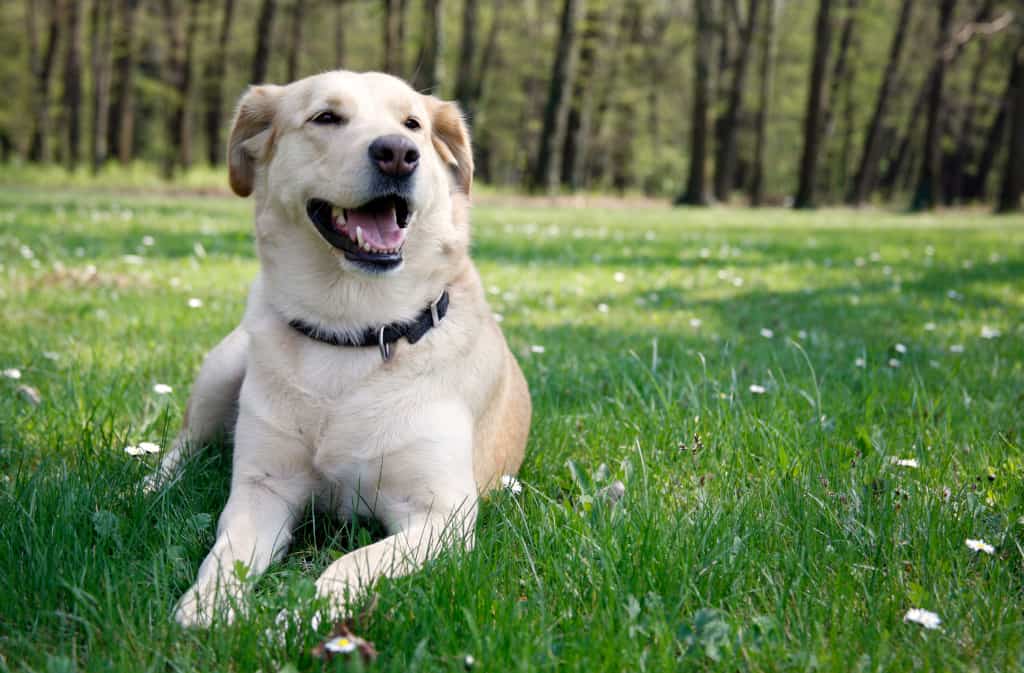
Spring has sprung, and the weather is starting to warm up, which means the birds will be chirping, flowers will bloom, and many pet parents are eager to take their furry friends out for some fresh air and exercise to enjoy all that nature has to offer.
But with the warmer weather comes more bugs and an increased risk of fleas, ticks, and other pests that could harm your dog’s health. Plus, there are a few other hazards that come with springtime!
So whether you are bringing your dog out for a walk in the park, hitting your favorite hiking trails, continue to train your dog for running, go boating with your pup, or just playing fetch on your front lawn or back yard, there are some crucial things you have to keep in mind to help keep your canine safe.
1. Watch Your Dog for Signs of Allergies
Taking your dog out for walks in spring will expose them to more allergens, like pollen and mold, that can cause seasonal allergies in your dog. They may show signs of scratching excessively or licking their paws to get rid of the offending allergen that makes them miserable.
Some of the symptoms include:
- Scratching more than usual
- Licking and chewing at paws
- Hives
- Sneezing
- Puffy eyes
- Swelling
- Hair loss
- Kennel cough
- Diarrhea
- Vomiting
- Ear infections
To prevent this, you have to groom your dog regularly to ensure they don’t have any mats that may harbor allergens. Grooming can be as simple or complicated as you want it to be, and here is what you should do:
Brushing – Brushing helps remove loose fur that may get stuck in their coats during shedding season or when they are outside rolling around in the dirt. Brush them at least every couple of days, regardless of what type of hair they have.
Baths – Bathing your furry friend is an excellent way of removing dead skin cells from their coats and reducing the number of allergens on them. Most dogs need baths every few weeks or once a month, depending on how often they go outside. Consider washing your fido with waterless dog shampoos so that you won’t over bathe them and damage their natural oils production, ultimately preventing dryness and itchiness.
Nail trimming – This is a necessary step to keep your dog’s nails from getting too long and causing pain. You can either use nail clippers or a pet nail grinding tool, which is a safer option. If you have trouble trimming the nails on your own, take them to a professional dog groomer.
Ear cleaning – And, of course, grooming also includes cleaning your dog’s ears with either dog ear cleaner solution or wipes. Not only can that remove allergens that cause airborne allergies, but also dirt and wax in their ear canal, which can prevent infection and irritation to their eardrums.
Doing these four things is an easy way to ensure your pet’s safety this spring! But if they develop any of the symptoms mentioned earlier, contact your veterinarian immediately, as the vet will need to perform intradermal skin testing on your pet to determine which environmental allergies (weed pollens, mold, grass, tree, etc.) are the culprit. They will then formulate a customized serum to treat your pet.
2. Protect Your Dog From Fleas, Ticks, and Mosquitoes
Warmer temperature also means the risk of fleas and ticks is on the rise. Spring pet safety tips for dogs would not be complete without mentioning how to protect your pet from these blood-sucking parasites, which can carry serious diseases like Lyme disease and Rocky Mountain spotted fever. Also, mosquitoes can transmit fatal heartworm disease to your dog through bites!
The best way to keep your furkid safe from these pesky little critters? Prevent them from coming into contact with your canine in the first place by letting your dog wear a flea and tick collar.
Also, make sure to check your pet daily for fleas and ticks, especially if you love hiking and camping with your pup. If you find one embedded in their skin, remove it carefully with a dog tick remover tool without breaking its head and mouth part.
3. Keep Your Pup Away From Toxic Spring Plants and Spring Flowers

It’s not uncommon that our canine companions will put grass and flowers in their mouths. The problem with that is that ingesting certain plants such as the lily of the valley can cause vomiting, lethargy, abnormal heart rate or rhythm, or even death!
So as a responsible pet owner, you have to keep an eye on them when out for walks. If you suspect that your four-footed friend has consumed any poisonous plants, contact a veterinarian immediately.
4. Make Sure Your Canine Wears an ID Tag or GPS Tracker
Spending more time in the great outdoors with your dog will undoubtedly increase the likelihood of your pup wandering off and getting lost. So, make sure your fido wears an up-to-date ID tag or a GPS tracking collar so that you can find them if they become separated from you while on an outing.
5. Watch for Thawing Rivers, Ponds, and Lakes
Frozen rivers, ponds, and lakes are some of the many hazards that await our canine friends in the early spring. Watch your dog while they’re playing, and don’t let them walk close to any frozen bodies of water that are showing signs of thawing to prevent them from falling through the thin ice!
6. Expect the Unpredictable Weather
The United States is known for its unpredictable weather, and spring is perhaps the wildest time of year. One minute you are basking in the sunshine while hiking through one of America’s many scenic trails, but within seconds the skies open up with rain, causing you to get soaked head-to-toe. So, make sure you have your dog’s jacket and boots with you at all times when heading out on an adventure.
What’s worse, spring is also the tornado season! And that brings scary thunderstorms and lightning, which the loud noises and flashes of light can be very frightening and stressful for dogs. That also means you need to speak to your vet about medications or get your pup a dog appeasing pheromone (DAP) collar to ease their fear and anxiety when the storm rolls through.
7. Clean Up Your Yard
You would also need to remove anything that could potentially harm your pet and keep slugs and snails out of your yard with pet-friendly pest control products so that they can play safely in the garden. While cleaning up your yard can be a lot of work, it will make it safer for your dog.
8. Use Dog-Friendly Products When Spring Cleaning Your House
Spring cleaning is a tradition for many. But when you are tackling your cleaning checklist, make sure to use dog-friendly products so that your pet doesn’t get sick from inhaling any chemicals while you’re scrubbing. Also, ensure to keep any highly toxic household cleaning products away from your dog.
9. Keep Chocolate and Candy Out of Your Dog’s Reach

There are many holidays in spring! With that comes chocolates, and there is nothing wrong with us humans indulging in sweets. And while chocolates are also irresistibly delicious for pets, it is not something that they can have!
Chocolate contains caffeine and theobromine, which can stimulate a dog’s nervous system and cause seizures, vomiting, diarrhea, tremors, and possibly death, depending on the amount consumed.
And candy contains artificial sweeteners like xylitol that can be toxic for dogs. In severe cases, it can also cause seizures, liver failure, and death. If you think your dog has ingested products containing xylitol, seek veterinary care immediately.
Conclusion
We hope you find these spring pet safety tips helpful, and be sure to share this article with your friends and family and post it on your social media, so all pet owners know the best ways to keep their four-legged companions safe in springtime!

